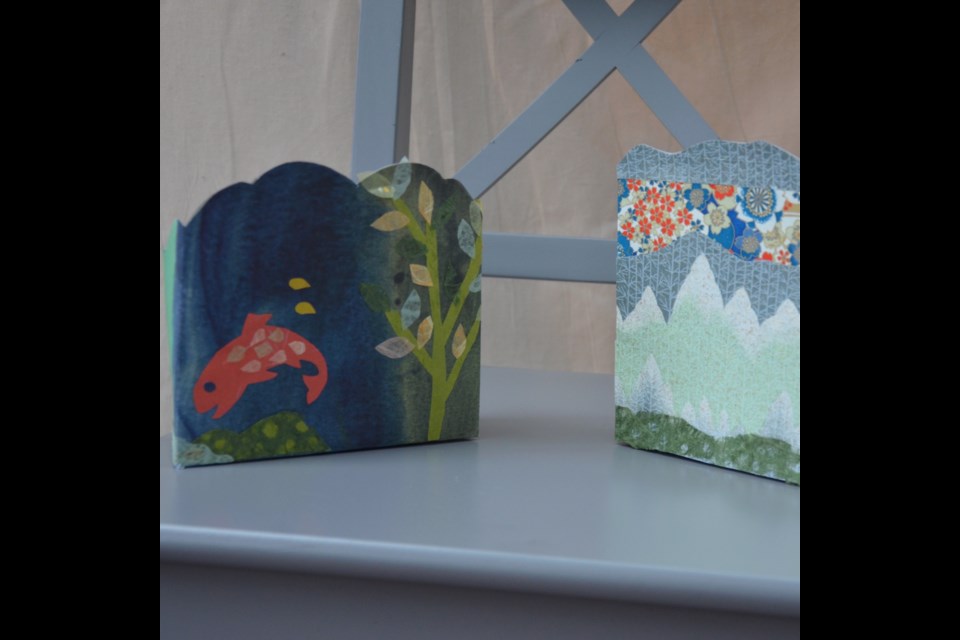In the audio recording, the voice of the late Karen Ann Lewis is strong, though raspy.
In it, she speaks of being born at St. Paul's Hospital and of being taken to a residential "school" when she was three and staying there until she was nine years old.
A member of the Sḵwx̱wú7mesh Úxwumixw (Squamish Nation), Lewis also recalls later moving to Squamish to live with her grandparents.
"They used to speak our language," she said proudly. "They used to speak it to us."
Lewis also talks about living in Hilltop House, which she described as her "home." It is also where she died in November.
Listen to the audio of Karen Lewis from "COVID in the House of Old here:
In the audio, she also talks of the challenges of being in the facility during COVID-19 and a desire for a Squamish Nation seniors' home where she could be surrounded by her own culture.
Lewis is one of six voices featured in the powerful travelling art exhibit "COVID in the House of Old" created by health historian Megan J. Davies.
The recordings are from a series of interviews that were conducted over the fall of 2021 with those whose lives were impacted by the pandemic's spread through long-term care.
"The voices give it the power," Davies said.
"They are so authentic."
The project also includes decorated "Storytelling Chairs," representing interviewees and "valentines" about the person.
For Lewis' chair, she wanted a bear painted on the back, which she said she identified with.
The project also includes a podcast with episodes that delve into issues of long-term care.
It also features a change.org petition created by families of long-term residents who died of COVID-19, which calls on the government to improve long-term care.
It demands several actions, including public commissions of inquiry on long-term care and a Canada-wide pilot project of 24 small, home-like seniors' facilities constructed to limit the spread of infectious disease.
Artist Hiroki Tanaka's video, "Elegy for Long Term Care Homes 2020 - 2021," is an audio-visual representation of those who died during the COVID-19 pandemic between March 2020 to October 2021 is also part of the project.
"Part of the exhibit is... the power of storytelling, the power of art, the power of objects. And partly, a memory-making project about memorializing people whose lives were so powerfully impacted by COVID in long-term care. But it's also a political piece, right? The project is a call for change," Davies said.
Davies, who is also a professor in the social science department at York University knows intimately, was already well-versed in the topic of long-term care before she began this comprehensive project.
She originally published a book on the history of long-term care in 2003 titled, "Into the House of Old: A History of Residential Care in British Columbia."
"When the pandemic hit, and people started dying — when the mass deaths in long-term care started to happen — I was not surprised because of my understanding of these places," she said.
Lewis' desire for more Squamish Nation culture around her is reflective of one of the issues with the current seniors' care model, Davies notes.
"Canada's long-term care facilities come from this English heritage of the workhouse. And they don't incorporate multiculturalism in them," she said.
"From Karen, I really learned the importance of having your own culture and kind of being with your people in an institution."
She said she also learned how people's past traumas come into play during something like a pandemic lockdown.
One of the interviews is with a man named Jacobus who left long-term care in Ontario a few months after the pandemic began to live with his daughter in B.C. He had been a teenager living in the Netherlands, right on the border with Germany during the Second World War.
He said being locked down due to COVID was like "being in prison."
"It was like being in the war [for him] again," Davies said.
She noted she also spoke to staff in long-term care for her project and no matter how kind and well-meaning the staff in residential homes are, they aren't given the time to do the work of caring that is needed, especially when residents are isolated during a locked-down or visitor restrictions.
"You need to know that person and know their story. And they kind of need to have a relationship with you. And, and in some way, there needs to be an exchange. Then you can have what they call relational care. But we need to spend more money in long-term care. We need to pay people, so they want to make a career out of it. And so they know that they're worth it, that their labour is worth it. And we need to give them more time."
During lockdown, many seniors were also not given the right to choose the level of risk they wanted, Davies said.
"I heard that really early on from a neighbour of mine up on Hornby Island, and she said, 'You know, is this going to be the rest of my life? Like, if I can't see people in my life? I actually know; I want to take a few risks. And she could do that, because she wasn't in an institution," Davies recalled.
"COVID in the House of Old" will soon be displayed at the Squamish Public Library's Foyer Gallery. It is being installed on Nov. 14th. The show runs through Jan. 30, 2023.
See the video below: "Elegy for Long Term Care Homes 2020 - 2021" -- by Hiroki Tanaka
Each death — between March 2020 to October 2021 — is represented by a musical note and a dot.
Editor's note, this story was originally published in January 2022 and was updated on Nov. 10, 2022, to say the exhibit will be at the Squamish Public Library.




